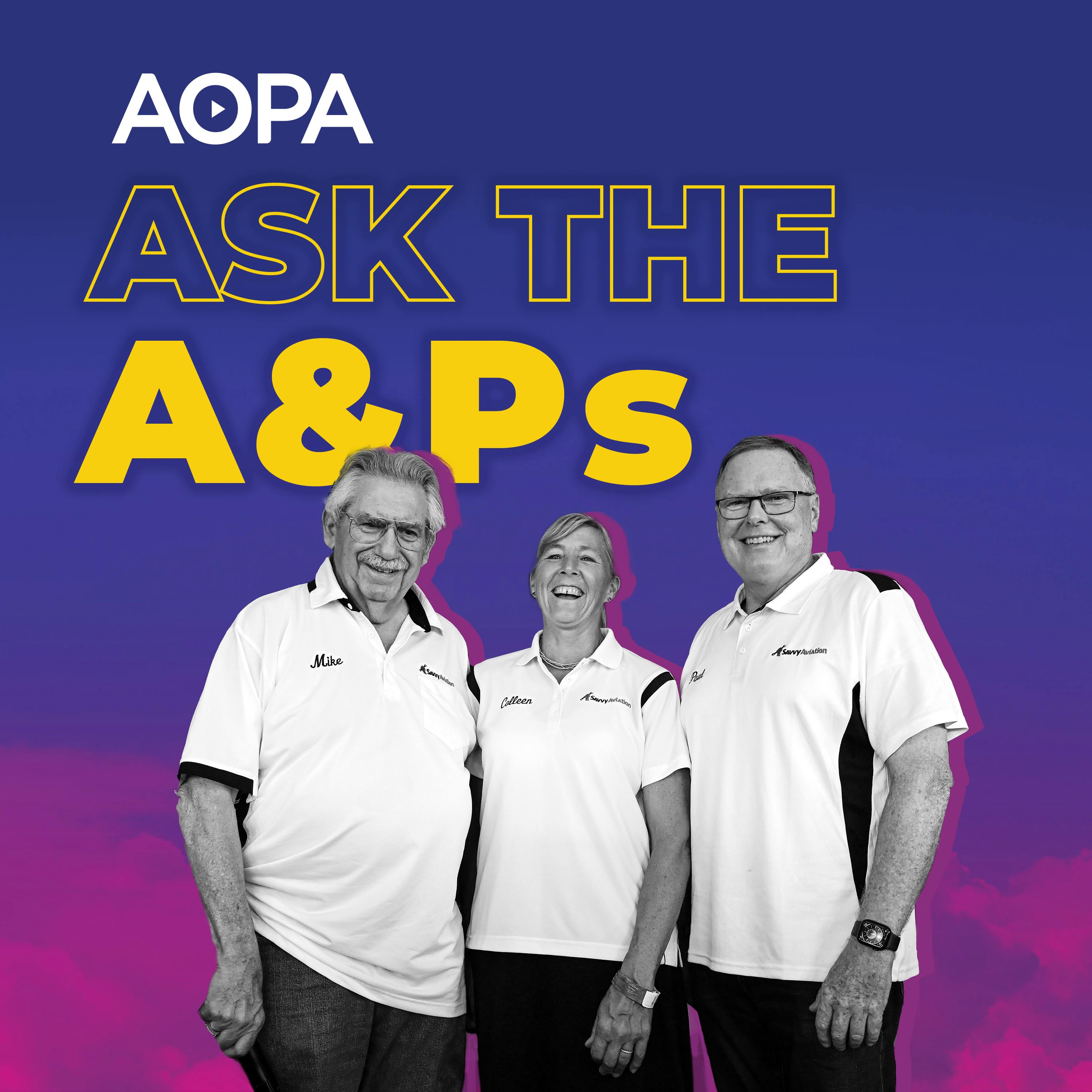Live from Airventure 2023
Description
Live from EAA Airventure 2023, check out our second in-person show. The questions come fast, and everything from proper leaning to oil leaks is covered. Can Oshkosh-goers stump Mike, Paul, and Colleen?
Full notes below:
The first question has Colleen in stitches. Can you widen the gap on your spark plugs to get more horsepower from an engine? Short answer? No! Don’t do it, the hosts agree. Even Colleen, who races airplanes at Reno, says she’s never heard of doing this.
Richard has a 182 and says the book will allow for high rpm and low manifold pressure, or low rpm and high manifold pressure for a given percent power setting. He wants to know which is better for the engine. The hosts say that rpm puts strain on the engine, so they would choose high manifold pressure and low rpm. The idea of “oversquare” is a relic and not at all true, they say.
Julie has a 1979 Grumman Tiger and she wants the hosts to address owner-produced parts. Owner-produced parts must be made to the original spec from the manufacturer, which can be hard to track down. But, assuming the owner can find the spec, he or she must be involved in the manufacturing process. Ultimately it’s up to the mechanic to decide whether or not to install the part, and therefore take on all the liability. Bottom line is work with the mechanic early to get his or her blessing.
Vedant asks how many more hours he can operate the 2,900-hour engine in his Bonanza. His engine has good compressions and only burns a quart every 20 hours. Colleen said conditioning monitoring is all about catching early indications of problems. Mike said there are only two compelling reasons to overhaul an engine. One is that you have solid evidence that there is something wrong in the bottom end that can’t be rectified without splitting the case. The other reason is that you can’t sleep at night.
Terry has a 182 with an O-470 and can’t keep cylinder 1 below 400 degrees, even at altitude. That’s the right rear cylinder with a vertical baffle right behind it. He checked that. When it’s one cylinder Colleen said it’s usually airflow. Paul suggested a GAMI lean test and an induction leak test as well, just to be sure.
Rex has a 182 and wonders about flying in the smoke that’s been prevalent around the country this year. The consensus is that smoke won’t hurt the engine, but changing the oil and induction air filter more often are good ideas.
Tim wants to know about leaning his Mooney M20C. He wonders whether he should lean until it’s pretty smooth or really smooth. Mike said you have to accept a small amount of additional roughness if you want to run really lean.
David has a 1979 172N and he’s wondering if he can use Camguard with his Lycoming 0-320-H2AD. Mike said he should use the AD-compliant additive just to remain legal.
Greg asks for downsides to using variable-timed electronic ignitions in a carbureted engines. Paul said the risk is if they advance too far you can get into detonation. He recommends checking the cylinder head temperatures to make sure they aren’t too high. Advanced timing will show high CHTs and low EGTs, and retarded timing is the opposite.
Jack has a Piper J-3 Cub with a Continental C-85 with only 40 hours. After flying he finds oil all over the belly but no obvious leaks. Paul said if the breather line is cut at the wrong angle it can actually cause a vacuum and draw oil out of the case. Mike said to borescope the cylinders with the intake valve open. It should be dry. If it’s wet you know where the oil is coming from.
Mike asks about rpm on the ground and lead scavenging. The hosts say to lean as far as you can, regardless of rpm. Mike said not leaning on the ground is the biggest cause of valve sticking. Paul mentioned that Cessna now recommends leaning while at 1800 during the run-up and he said you can use that setting for ground leaning.
More Episodes
Published 11/15/24
Lean of peak is causing odd vibrations in a Commander, and the hosts discuss proper troubleshooting. Plus carb heat on the ground, dehydrators, and parts no longer manufactured. Email [email protected] for a chance to get on the show.
Full notes below.
Chip said his mechanic is concerned about...
Published 11/01/24
Rough idle, electronic ignition basics, airplanes to avoid (or not), and the difference between detonation and pre-ignition are on tap for this episode. Email us at [email protected] for a chance to get on the show.
Join the world's largest aviation community at aopa.org/join
Full notes...
Published 10/15/24


